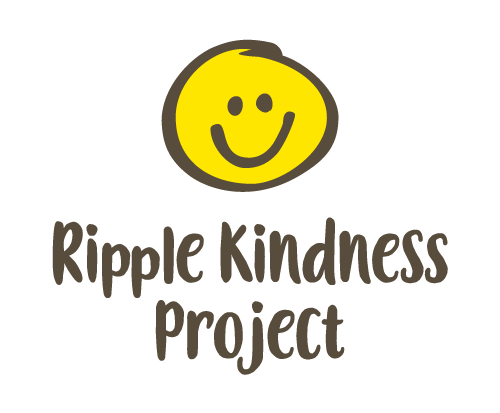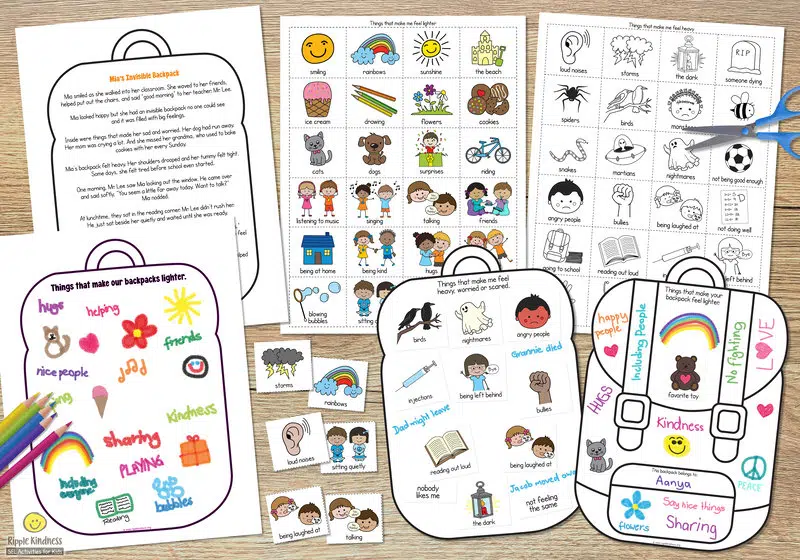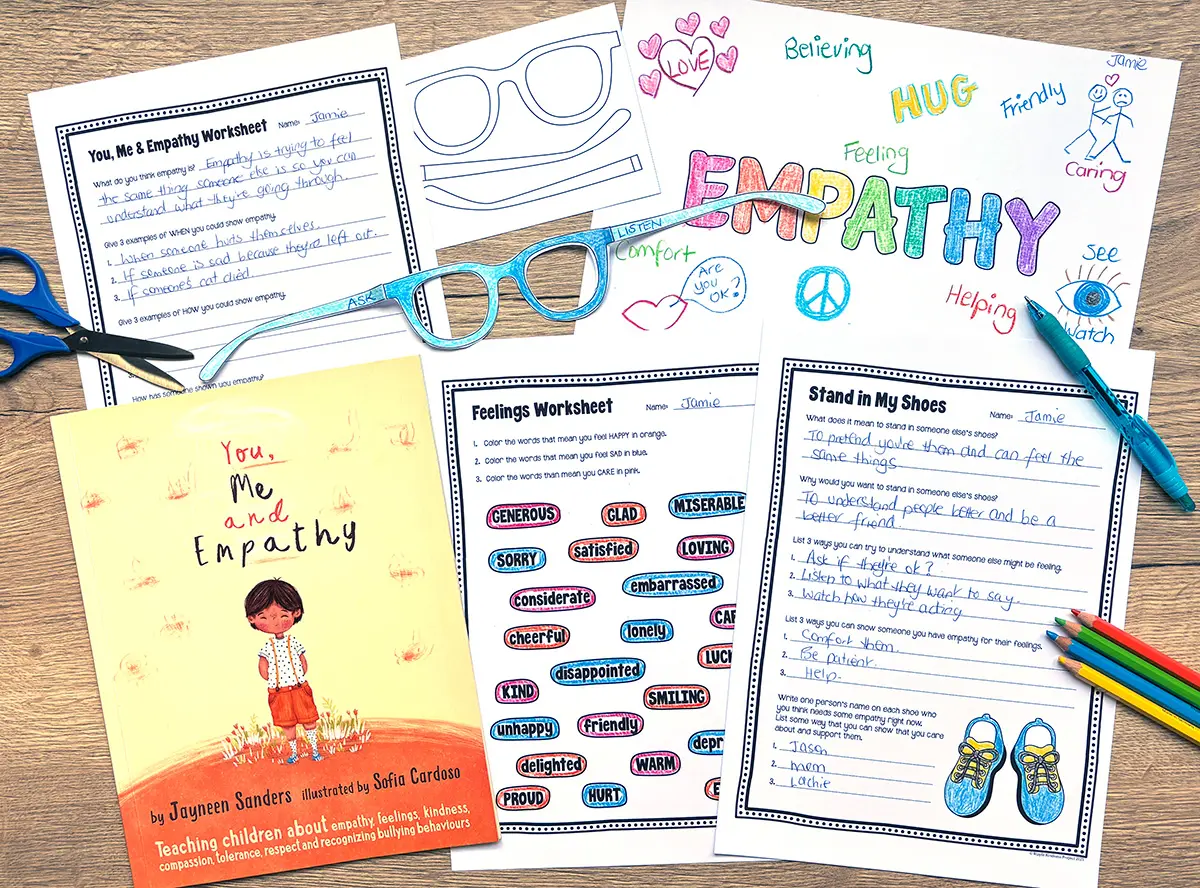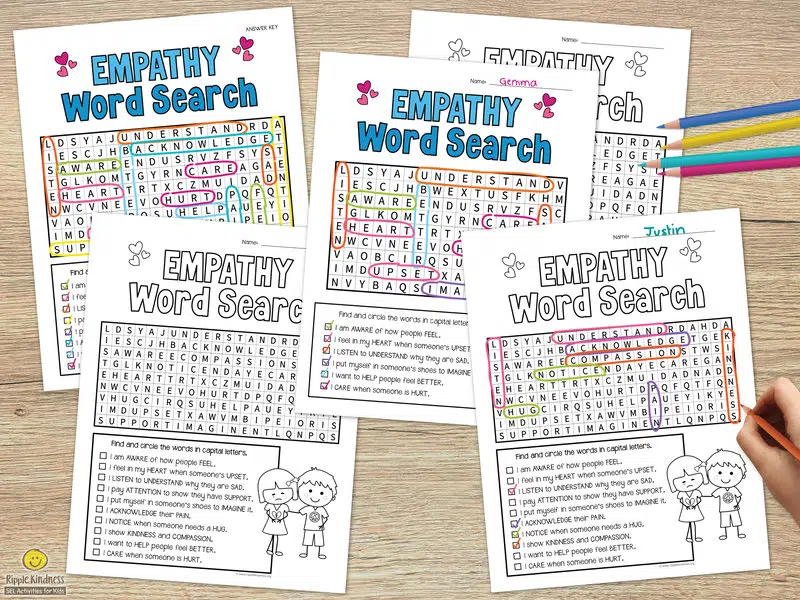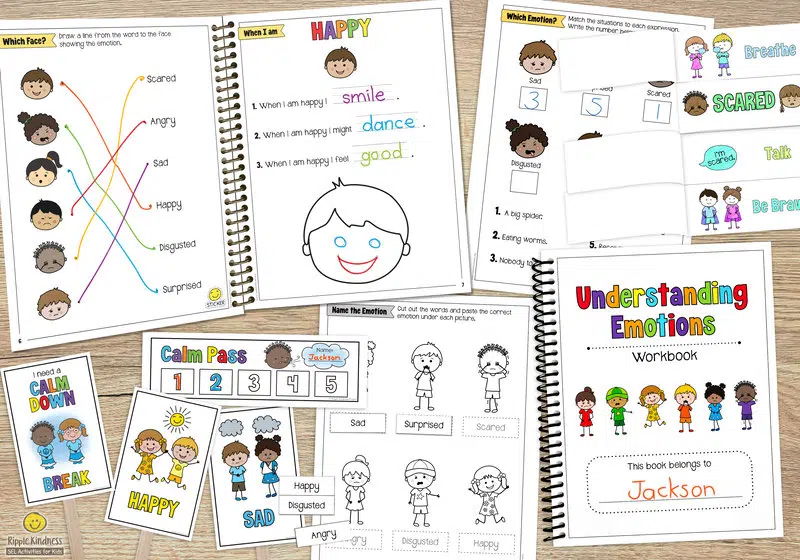Simple Story About Empathy & SEL Lesson for Elementary Students
Inside: This warm, short story and SEL lesson plan includes a ready-made empathy activity for elementary teachers supporting social emotional learning competencies. It’s designed to help students explore big feelings, build emotional literacy, and strengthen classroom connections.
There’s a popular inspirational story on my blog with a simple but very powerful life lesson. It’s about love, presence, and the kind of quiet moment that stays with you long after it’s over. Even though it’s fictional, the message feels real and makes you stop, reflect, and see the world a little differently.
Reading it again reminded me how powerful storytelling can be in the classroom. When kids hear about a character’s challenges, it helps them connect feelings with words, practice empathy, and see the world through someone else’s eyes.
More...
Not wanting to miss an opportunity for a meaningful SEL lesson for elementary kids, I’m sharing a warm and simple story I made up for you to use in your classroom.
Mia’s Invisible Backpack is a relatable piece that prompts a lively discussion about big feelings and empathy. I’ve provided a ready-to-use SEL lesson plan with questions and activities for teaching empathy to build emotional literacy in your classroom.
DISCLAIMER: This post includes affiliate links. A small percentage of each sale from these links helps me provide tips and freebies for parents and teachers.
Key Takeaways from This SEL Lesson
- Empathy can be taught through storytelling.
Mia’s Invisible Backpack helps students understand emotional burdens and the importance of noticing and caring for others. - Reflection deepens emotional literacy.
Guided questions give kids the language to talk about big feelings and connect the story to their own experiences. - Hands-on activities make SEL memorable.
The backpack craft offers a creative way for students to express emotions and recognize the support around them. - This SEL lesson plan supports key competencies.
It builds empathy, self-awareness, and relationship skills — foundational elements of social emotional learning. - Additional SEL resources are available.
Teachers can extend the lesson with an empathy unit and printable activities linked throughout the post.
Story: Mia’s Invisible Backpack
Mia wore a big smile as she walked into her classroom each morning. She happily waved at her friends, helped unstack the chairs, and always said “good morning” to her teacher, Mr. Lee.
But no one saw the invisible backpack Mia carried. There were things inside she didn’t talk about, like how her dog had run away last week, how her mom had been crying a lot lately, and how she missed her grandma, who used to bake cookies with her every Sunday. The backpack felt heavy. Her shoulders slumped sometimes, her tummy felt tight, and some days it made her tired before the first bell even rang.
One morning, Mr. Lee noticed Mia staring out the window during circle time. He walked over and whispered, “You seem a little far away today. Want to talk about it?” Mia nodded slowly.
They sat together in the reading corner during lunch when no one was around. Mia didn’t say much at first, but Mr. Lee was patient and just stayed beside her quietly. The cushions were soft and cosy, and she liked her teacher. She felt safe and brave enough to let her guard down.
Finally, she whispered, “I have lots of things that make me feel worried and sad.” Mr. Lee smiled gently. “We all have an invisible backpack that carries stuff that bothers us. Sometimes it can get heavy, but you don’t have to carry yours alone.”
Mia didn’t feel like everything was fixed. But she felt lighter. Like someone had helped her unzip the backpack and take out a few things. The next day, she brought Mr. Lee a drawing. It was a backpack with a heart on it. Inside, she’d written: “Thank you for seeing mine.”
Why Stories Work for Teaching Empathy
Teachers often ask, “How can you teach empathy?” The truth is, you don’t always have to spell it out. Sometimes, the best way to teach it is by sharing a story that children can connect with.
Mia’s Invisible Backpack is a gentle example of empathy in the classroom. When kids hear about Mia and the weight she’s carrying, they begin to understand that everyone has worries and feelings we can’t always see. It’s a simple, powerful way of teaching empathy to students by showing, not telling, what it looks like to notice, listen, and care.
And it’s not just about feelings. It’s about impact. Research shows that social-emotional learning activities like this can improve the classroom climate, reduce behavior issues, and even support academic growth. SEL lessons for elementary kids build friendship skills, resilience, and kindness, tools they’ll carry far beyond the school year.
Pin this image to save these ideas for later

Helping Kids Unpack Their Feelings
The discussion questions below help students explore the emotional message of Mia’s Invisible Backpack. Once they’ve had time to reflect and share, the backpack craft becomes a way to express those thoughts in a personal, creative format. It gives kids a chance to “unpack” their own invisible backpacks and recognize the support they have around them.
The combination of storytelling, conversation, and hands-on creativity helps build emotional literacy in a way that’s both meaningful and memorable.
Reflection Prompts
After reading Mia’s Invisible Backpack, ask your class to pause and share. These reflection questions encourage students to think about the story and connect it to their own lives:
Prompts like these give kids the language to talk about big feelings, while also practicing listening to one another.
Design Your Backpack SEL Activity
Looking for activities for teaching empathy that are easy to set up? This one connects perfectly with the story and encourages students to express their feelings and show empathy for others.
Backpack Craft Instructions:
- 1Prep: Give each student two blank backpack outlines (or let them draw their own). Ask them to cut both out.
- 2Inside the Backpack: Have them draw or write things they sometimes carry with them on one piece. It could be feelings, worries, or even happy thoughts.
- 3Outside the Backpack: Ask them to decorate the second piece with supportive words, kind actions, or pictures of people who help lighten their load.
- 4Assemble It: Line up the pieces with the decorated side facing out and tape them together at the bottom. Use a few paper clips to close the top.
- 5Optional Sharing: If they feel comfortable, invite students to share their backpack with a partner or small group. Remind them that it’s okay to keep some things private.
- 6Class Reflection: Finish with a whole-class conversation with questions like:
“Did you and your partner / group discover worries or weights that are similar in your backpacks?”
“How can you help others when their backpack feels heavy?”
This SEL lesson plan can be used during morning meetings, SEL blocks, or even art class. It’s simple but powerful, and it gives kids a concrete way to think about empathy.
Ready-to-Go Kits: Tailored for Your Grade Level
If you need activities that teach empathy in a fun, hands-on way, but want a quick, done-for-you kit (no hunting for supplies or scripting discussions), I've got your back!
I've bundled Mia's story and backpack craft into two ready-made TPT kits, each dialed in for the right age group. The younger set gets a playful, picture-packed version to spark those first "aha" moments about feelings, while the older kids get tools for real-talk reflections and helping hands.
Both pack in the full story, easy-print templates, cut-and-paste picture cards (also use them for matching with young ones) and age-appropriate extension activities. Peek at how they differ below, then grab what feels right for your kiddos. You can even get an empathy bundle that includes this pack with other empathy activities and a fun wordsearch for older kids.
Ready-to-Go Kits: Tailored for Your Grade Level
If you need activities that teach empathy in a fun, hands-on way, but want a quick, done-for-you kit (no hunting for supplies or scripting discussions), I've got your back!
I've bundled Mia's story and backpack craft into two ready-made TPT kits, each dialed in for the right age group. The younger set gets a playful, picture-packed version to spark those first "aha" moments about feelings, while the older kids get tools for real-talk reflections and helping hands.
Both pack in the full story, easy-print templates, cut-and-paste picture cards (also use them for matching with young ones) and age-appropriate extension activities.
FEATURE | 1st-2nd Grade Kit | 3rd-4th grade kit |
|---|---|---|
Core focus | Basic emotional literacy; | Advanced self-awareness; perspective-taking and peer support strategies. |
Backpack components | Simple inside/outside sheets; | Multi-layer (4 sheets): Heavy feelings (back), Who Helps/How I Help (inside), Lighter strategies (front). |
Discussion & story | Easy comprehension questions; | Deeper prompts on masks/smiles hiding emotions; class brainstorm for relatable worries. |
Key activities | Story and backpack craft (inside heavy feelings/outside lighter) with sharing circle. | Story and backpack craft (multi-sheet assembly); guided brainstorming, and class/group reflections. |
Extension activities | Matching game (heavy vs. light feelings), physical backpack demo, happy poster build, fill-in-the-blank worksheet. | Empathy role-play scenarios, "mask" craft (show vs. feel), journaling for personal insights, empathy pledge bulletin board. |
Prep & time | Super low-prep; 30-45 min; heavy on tactile play. | Moderate assembly; 45-60 min; encourages longer shares. |
No matter the grade, these kits turn the story into a full SEL session that sticks. Scroll down to grab yours!
Examples of Empathy in the Classroom
When you guide students through this story and activity, you’ll notice little moments of empathy begin to surface:
These may feel like small steps, but they add up. Acknowledging these examples of empathy in the classroom as they occur can help cement the concept. Ask students to notice when someone’s modeling patience, listening, and kindness (including you). These reminders help make the behavior normal and expected.
Extending the Lesson
If you’d like to expand this idea, here are a few ways to keep building on it:
Teaching empathy isn’t a one-time lesson. It’s something that needs to be woven into everyday moments and stories like Mia’s Invisible Backpack gives us a powerful starting point. They remind students that everyone carries feelings we can’t always see, and that kindness and listening can make someone’s load a little lighter.
Try this story and activity with your students, and see how it opens up conversations about emotions, making friends, and supporting others. It’s a simple SEL lesson for elementary grades, but it can spark a big shift in how children see and care for one another.
More SEL Activities to Explore
If you’re loving how Mia’s story unpacks those hidden feelings, let’s keep the empathy momentum going! These classroom-ready resources help students build emotional vocabulary, practice perspective-taking, and strengthen kindness in everyday interactions.
Perspective Taking Empathy Lesson & Craft (2nd-4th)
Help students step into someone else’s shoes with engaging scenarios, discussion prompts, and a hands-on empathy craft.
Empathy & Compassion Word Searches (1st-3rd)
A quick, calming fast-finisher that reinforces empathy and compassion vocabulary. Differentiated versions are the perfect brain break, SEL center activity, or thoughtful add-on to Mia’s Invisible Backpack story.
Understanding Emotions Workbook (K-1st)
Support emotional regulation with literacy-based activities that help students identify triggers and build self-awareness.


You may also like...

AUTHOR: Lisa Currie - Ripple Kindness Project
For over a decade, I've focused on promoting kindness and Social and Emotional Learning (SEL) in elementary classrooms. Through hands-on experience supporting students, I've seen how empathy and respect are vital for creating harmonious, inclusive environments. I'm passionate about helping students understand the impact of their emotions and actions on their relationships. I believe kindness is fundamental to fostering self-confidence and happiness while building inclusive, safe classroom communities that discourage bullying and exclusion.
